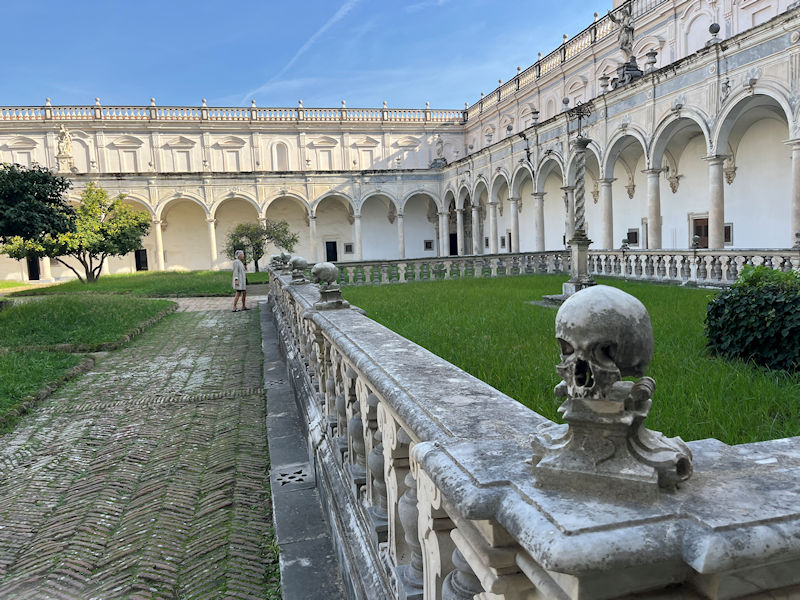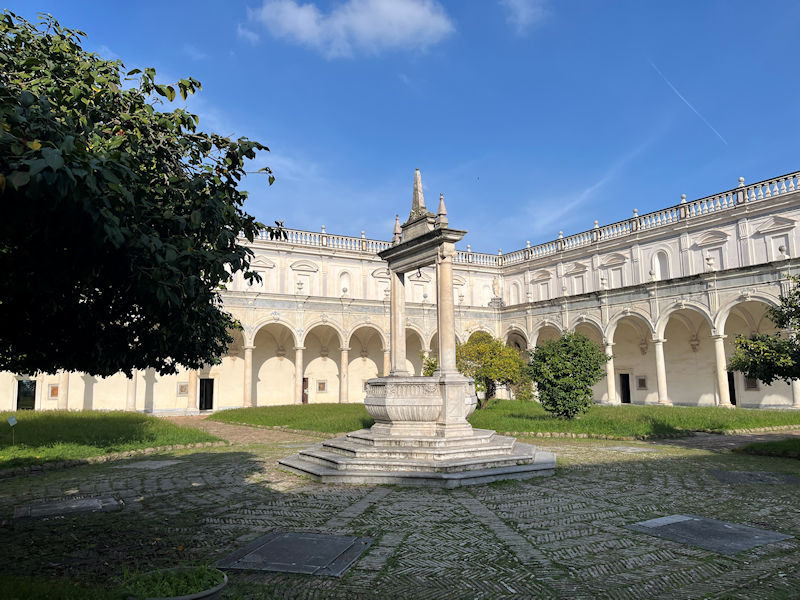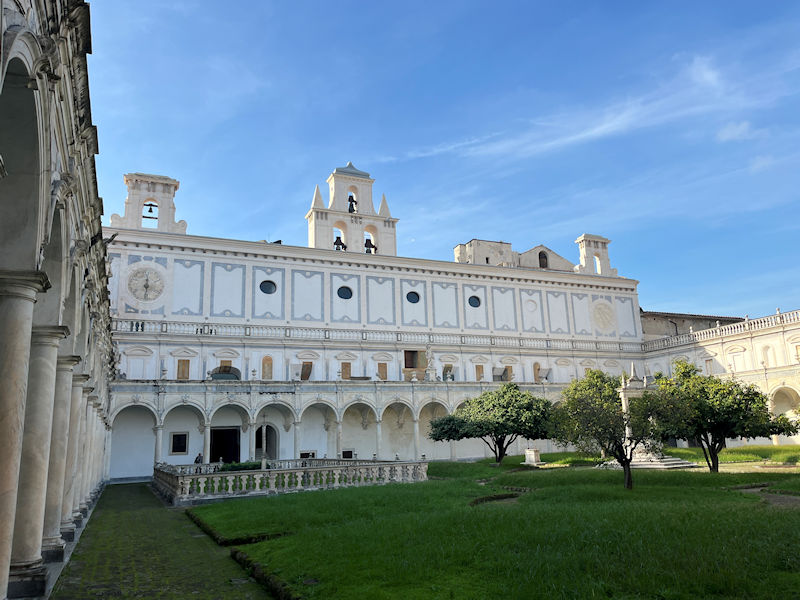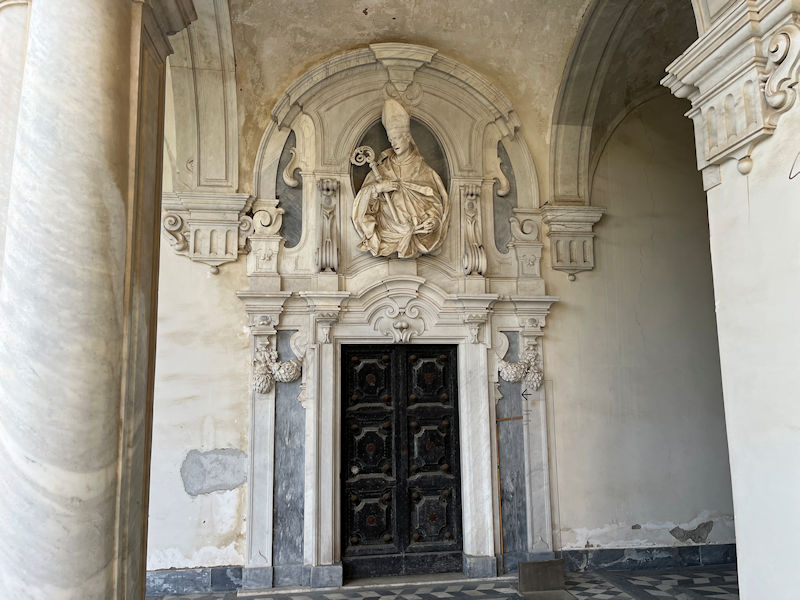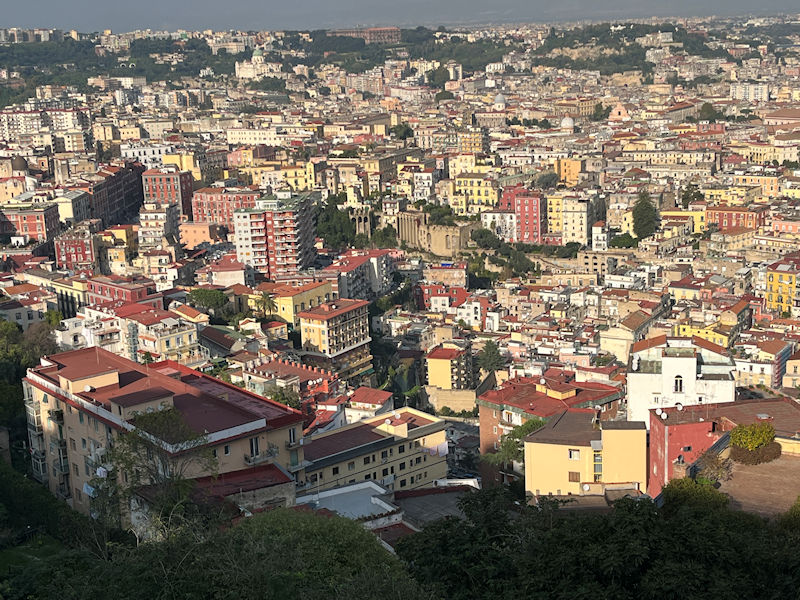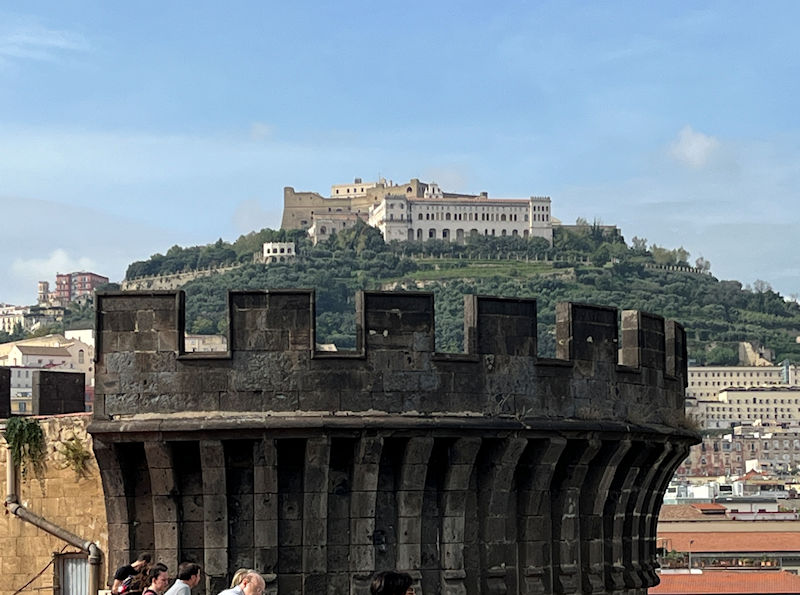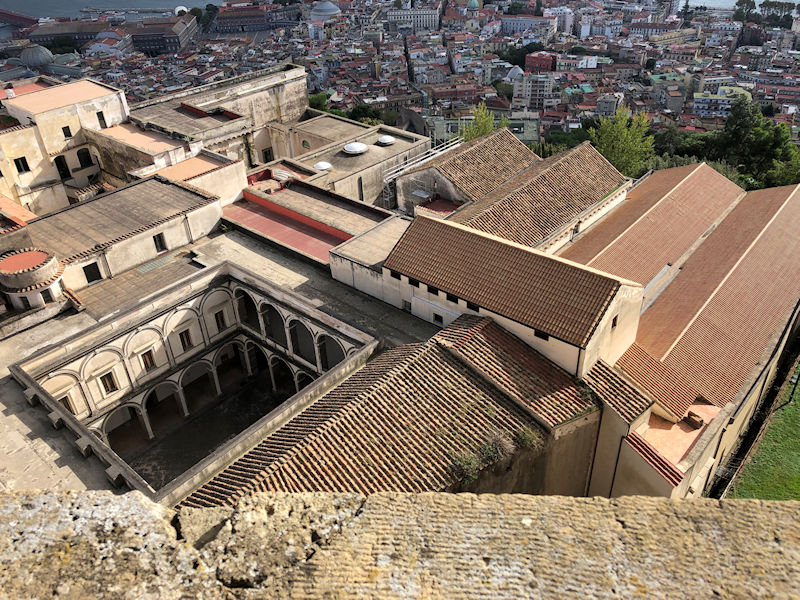You may not find this terribly rewarding unless you're included here, so this is a good time for casual and random browsers to turn back before they get too caught up in the sweep and majesty of the proceedings and can't let go.

There's too much to see here in one day, but we're intent upon carrying on until one of us faints and requires help. On the preceding page, we briefly summarized the history of the Carthusian monastery, and subsequent civic museum, since 1325, and will now plow forward with enthusiasm.
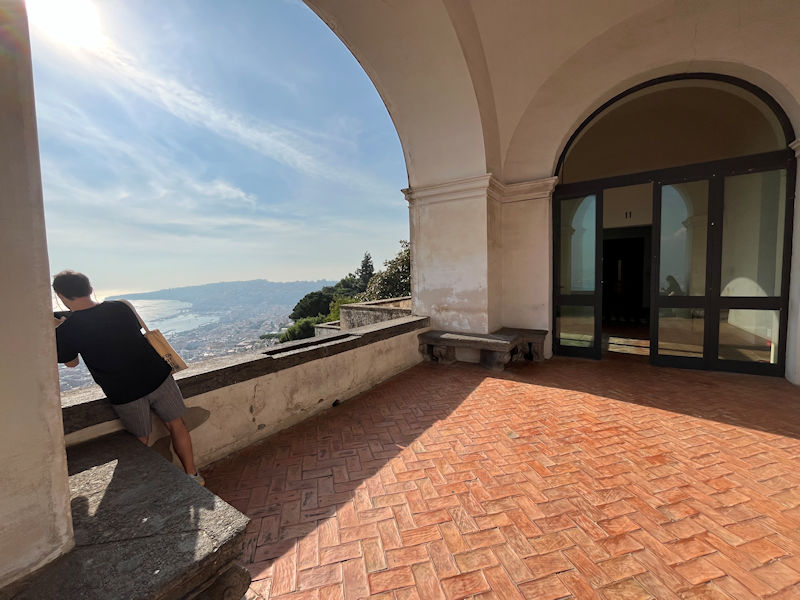
Fantastic views from the newly restored loggia.

A disappointing view of 'La Maddalena' by Andrea Vaccaro (Naples, 1604-1670) (Sadly, we must be in the Cappella della Maddalena.)
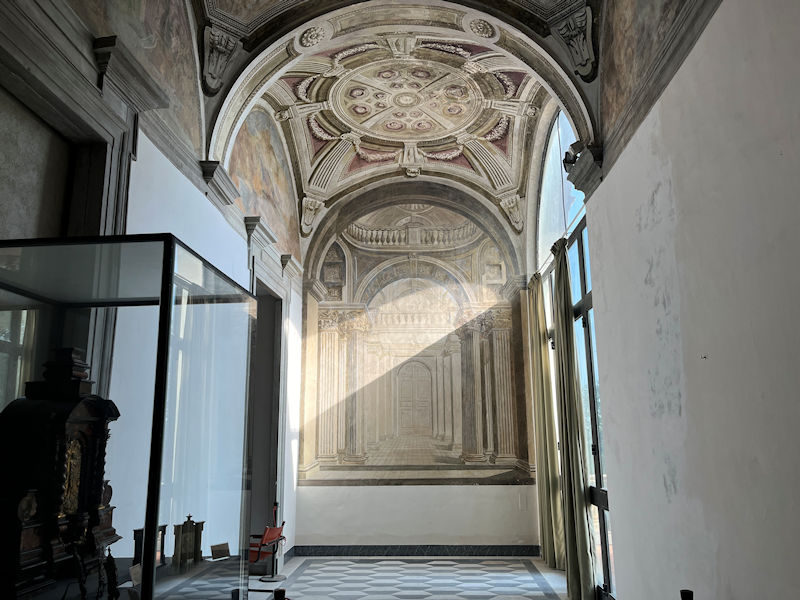
We're lost. But it's okay. That's probably the door out to the courtyard, just outside of Mary Magdalene's Chapel.
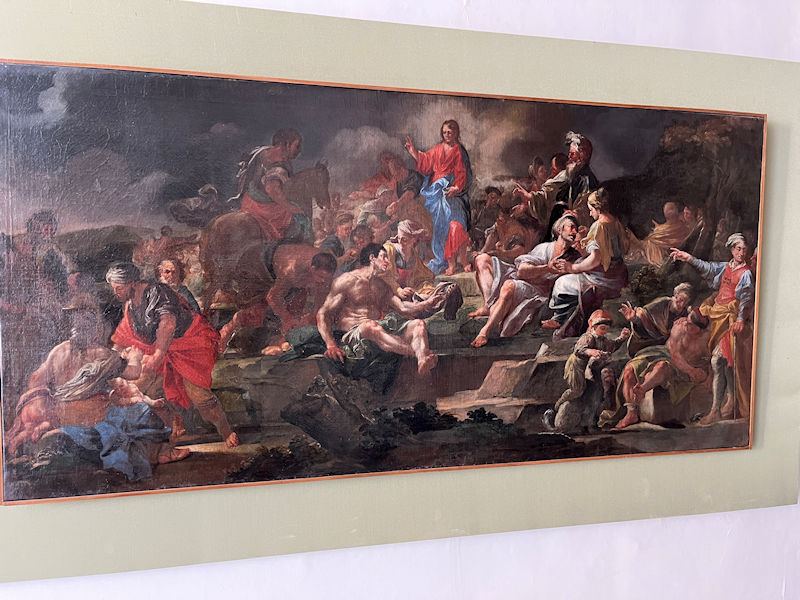
This looks like a 'Massacre of the Infants' or a 'St Bartholomew's Day Massacre', but in fact it's advertised as Christ's 'Multiplication of the Bread' miracle, by Domenico Antonio Vaccaro.
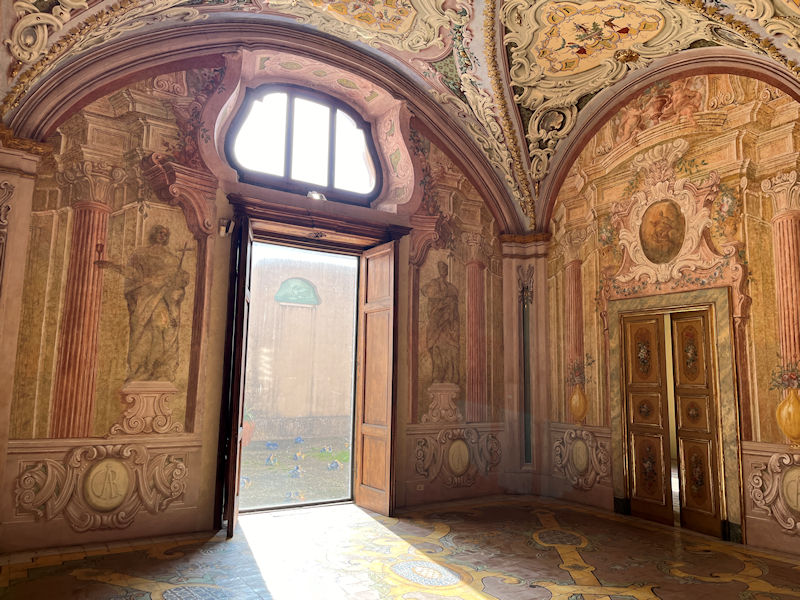
In the Prior's inner sanctum


The Archangel Michael 'chases away' (scaccia) the demons', by Domenico Antonio Vacarro
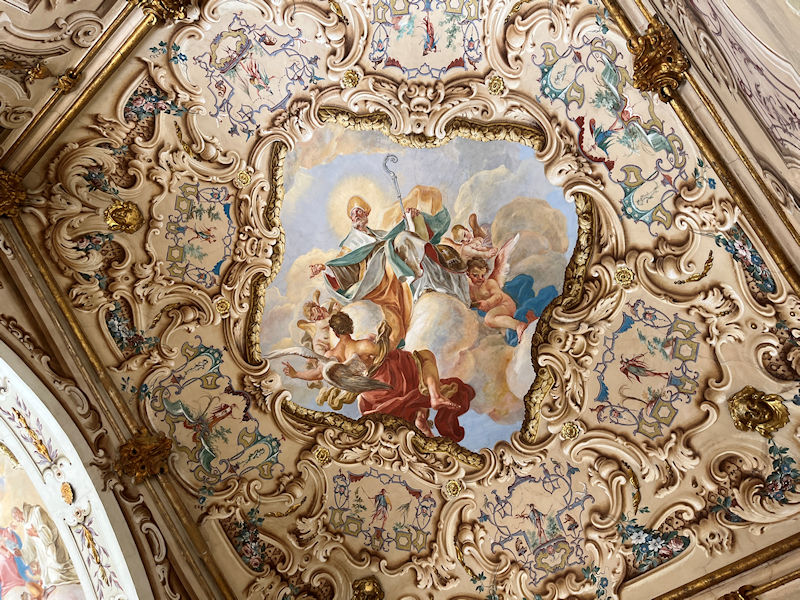
The standard 'ascending into Heaven' motif, wafted by babies with wings on
Now for the Presepi
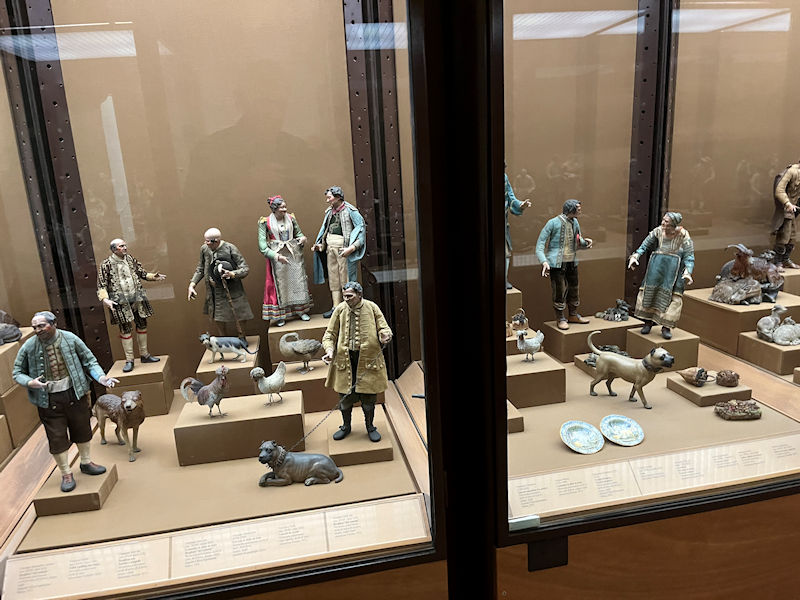
One thing that the museum here is famous for, and in fact that Naples is famous for, is the handcrafted figures that make up the crèche (Fr) or presepe (It) or as the info plaques refer to them, the Nativity Cribs. (We're in the original kitchens, by the way.)
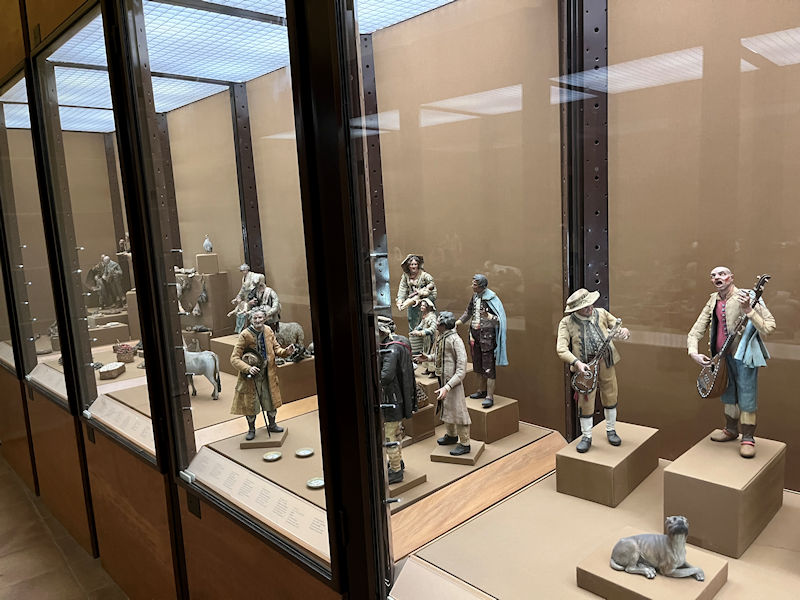
A group of 'crib figures' from the late 17th/early 18th centuries (by Domenico di Nardo) were sent over to the museum here in 1939 by the National Museum of Naples, where they had been ignored for yonks. It's speculated that the presence of very countryfolkish subjects, with some dwarfs, hunchbacks, fat people, monks, idiots, etc., might have discouraged display back in the day.
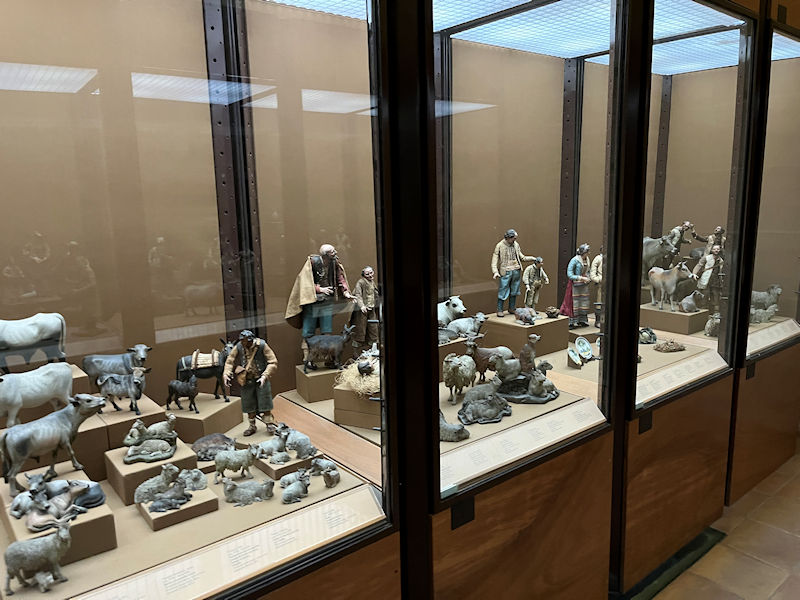
From just the core figures of the holy family, shepherds, magi, sheep, and so on, Naples has long built up a reputation for handcrafted figures of all kinds that are appreciated by many everywhere. (Kristin's been collecting them since the early 1980s, and that's part of why we're here right now. The new ones will soon be sitting out in the middle of our main room.)
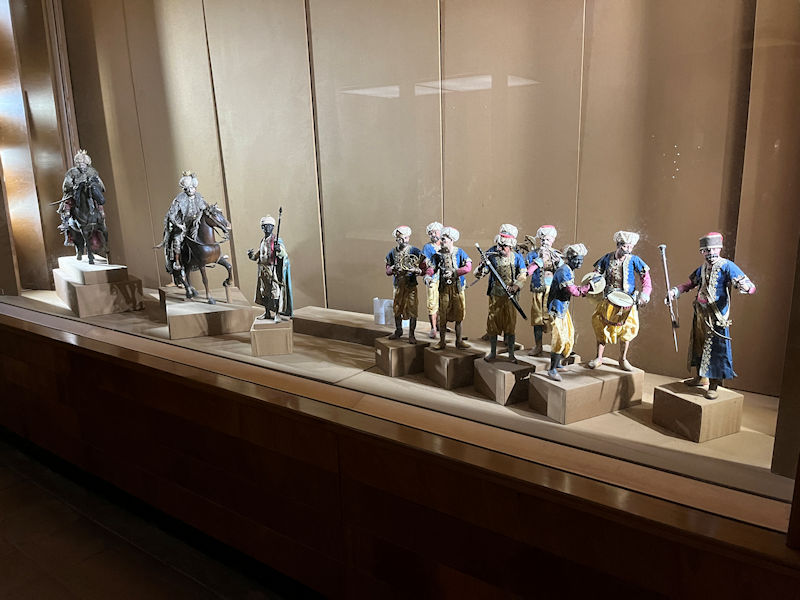
Like these guys -- the info plaques here point out that as the Italian world became more open and involved with the East, figures of Ottoman soldiers and . . .
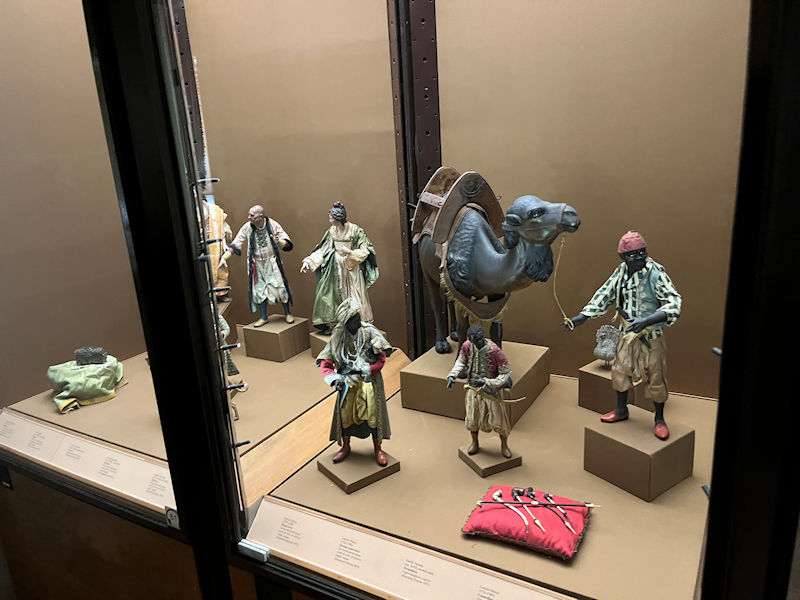
. . . darker sorts of people became more appreciated.
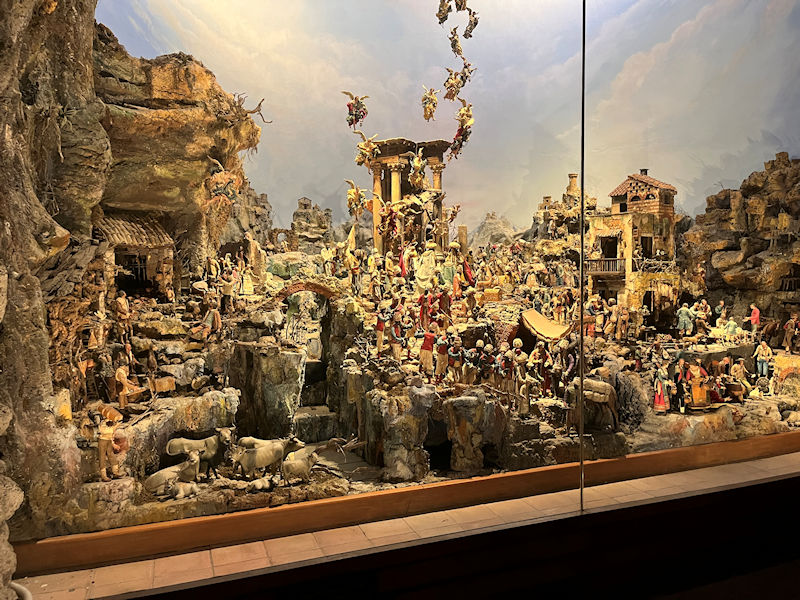
To quote from the Lonely Planet website: 'The Sezione Presepiale – which faces the refectory – houses a whimsical collection of rare Neapolitan presepi (nativity scenes) from the 18th and 19th centuries, including the colossal 19th-century Cuciniello creation, which covers one wall of what used to be the monastery’s kitchen.' (source)
'The Michele Cuciniello Nativity Crib in the Certosa di San Martino is indeed an outstanding work of art . . . [Cuciniello] donated it in 1877 and two years later, together with Luigi Farina, he personally set it up. It was inaugurated on December 28, 1879.' (source)
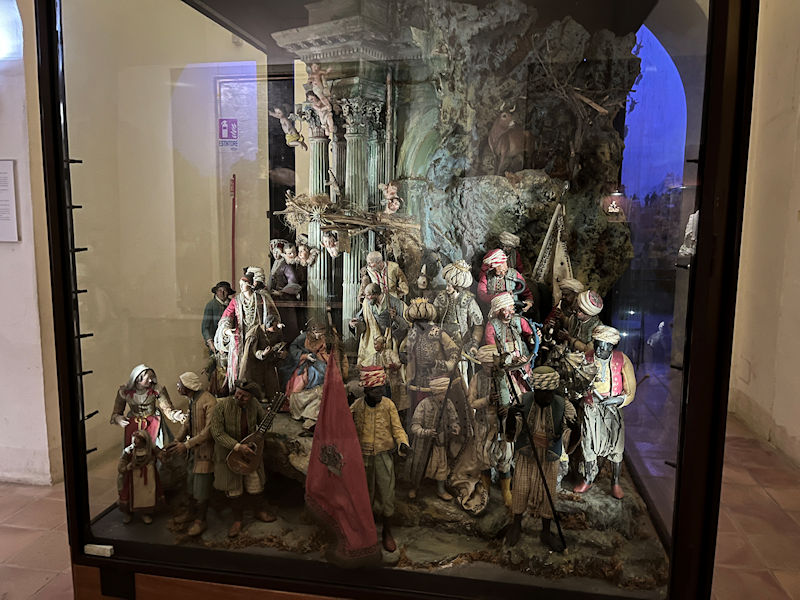
It's been said that we can expect to find 'the popular Italian comedian Totò, Maradona, Berlusconi, Caruso and Donald Trump incongruously in close proximity in the crib to Pope Francis and Mother Teresa' (source), and to Jesus, we might add.

This is the refectory, built in the 18th century by Tagliacozzi Canale, used as a meeting place for monks in religious festivals, etc., featuring a pulpit for some pompous soul to read out the scriptures whilst the poor monks were trying to gag down their gruel.
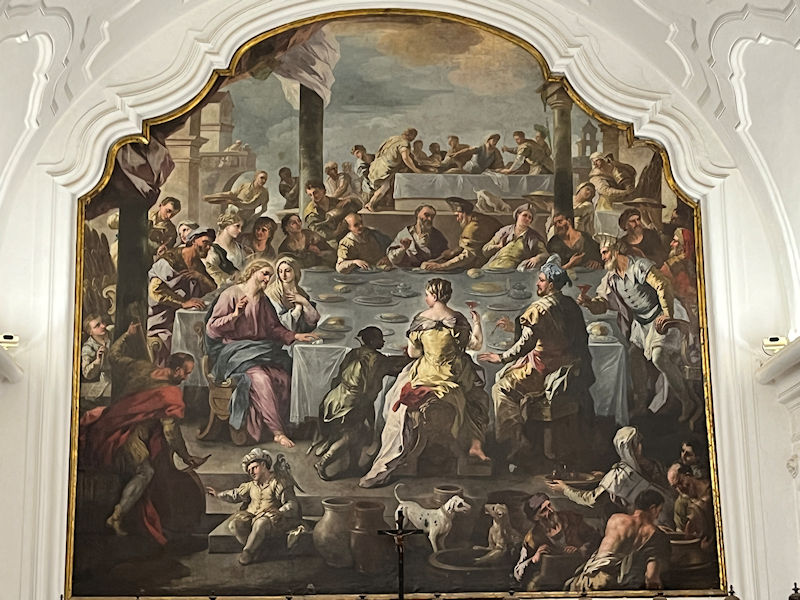
On the back wall, 'The Wedding at Cana', by Nicola Malinconico, 1724 (love the dwarf with a bird on and the guy playing a cello)
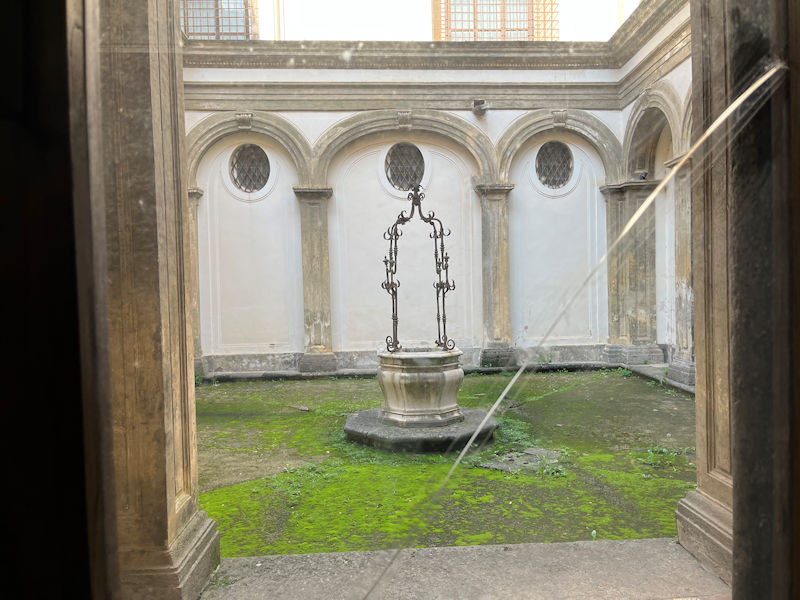
A mini-courtyard adjacent, presumably for water

-- Y'all coming or what? The refectory stopped serving more than 158 years ago.
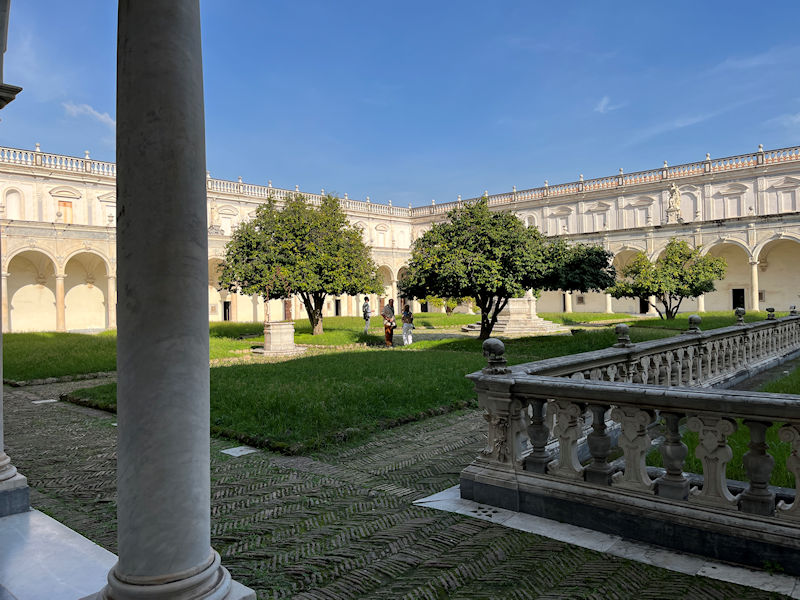
The Chiostro Grande, built in the 16th century by Dosio on an original and embellished by Fanzago in the 17th.

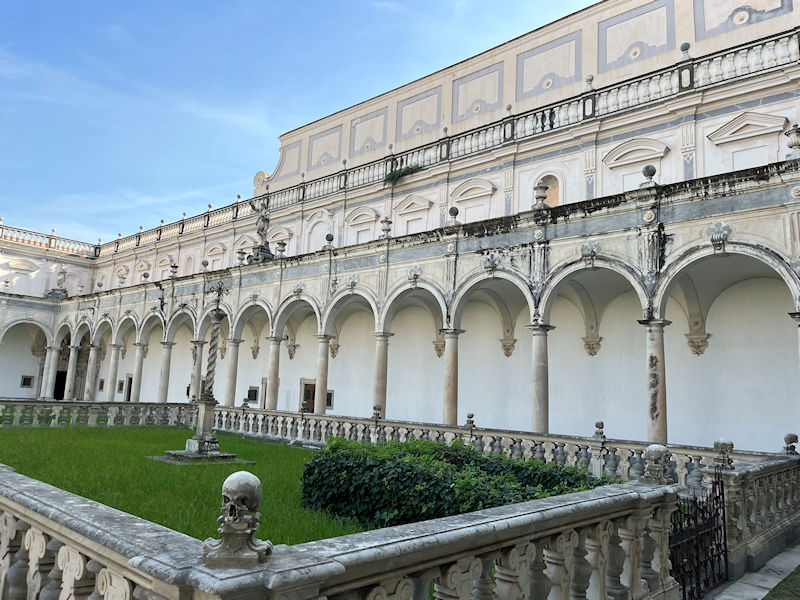
In one corner there is a small cemetery by Fanzago for the monks. The skull decorations in cloisters were not uncommon, but these are famous.

-- May we go in here, sir?
-- That'll be €6, and no backpacks. And No Flash!
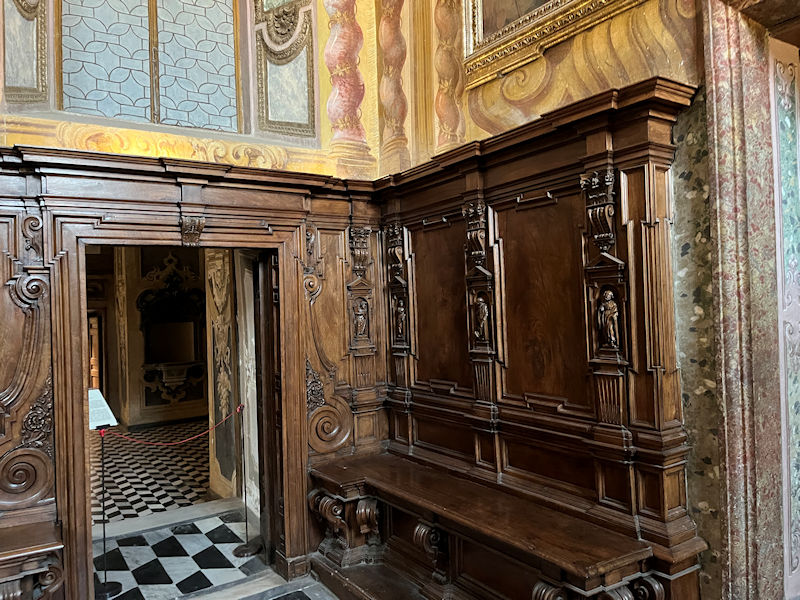
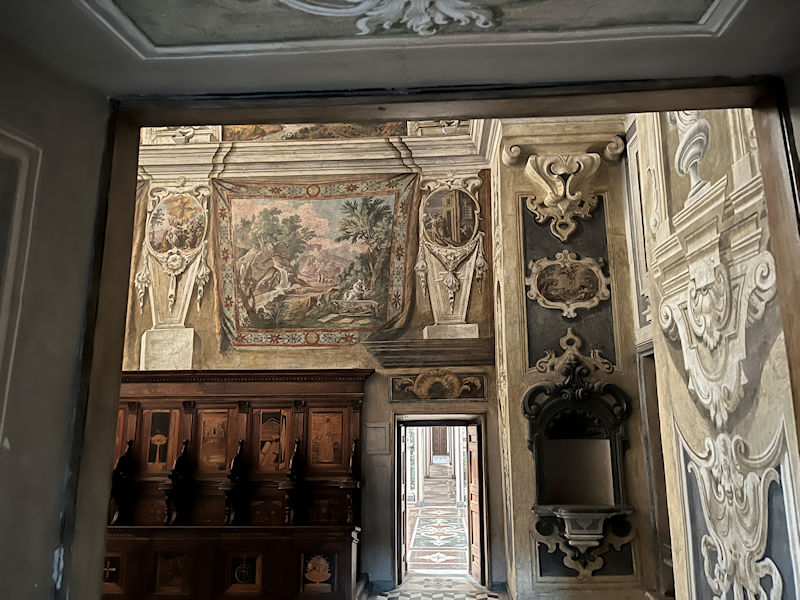
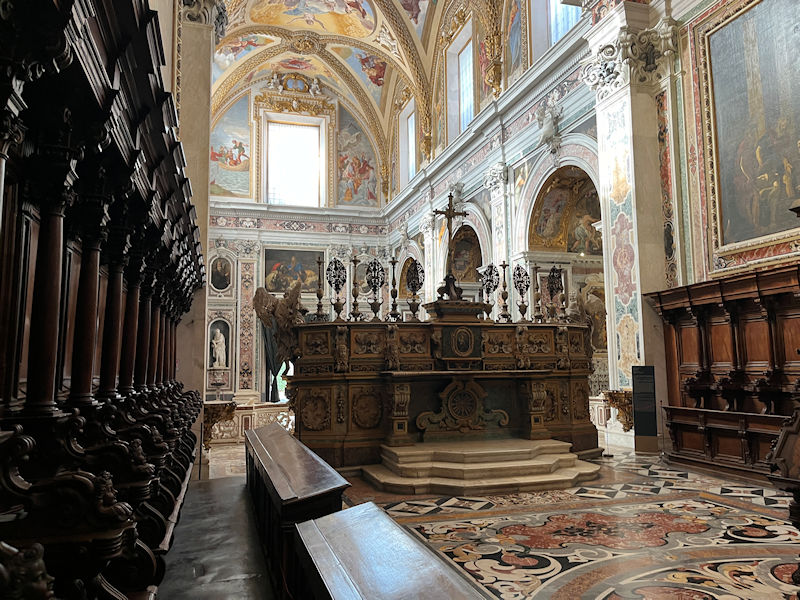
The back of the altar, looking from the apse
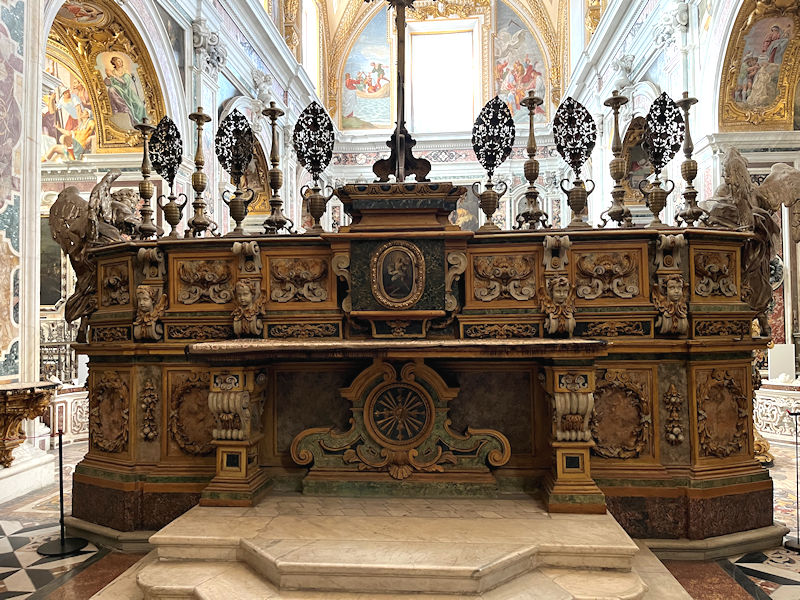

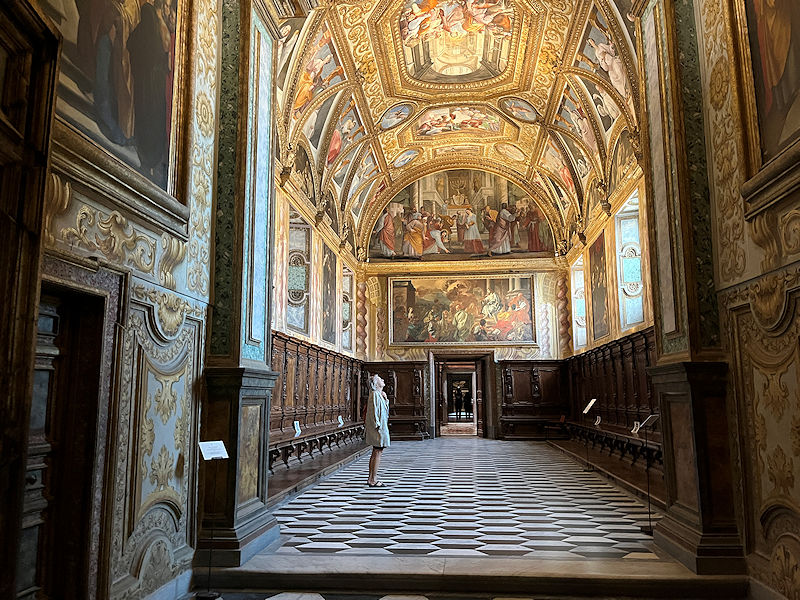
We're wandering from room to room, not entirely sure where we are at any point. This appears to be the Chapter House, just off the apse, and . . .

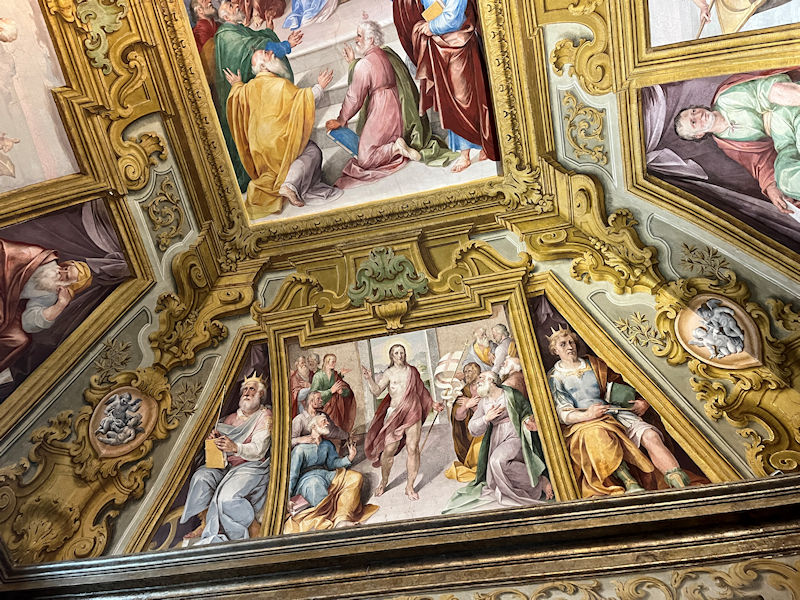
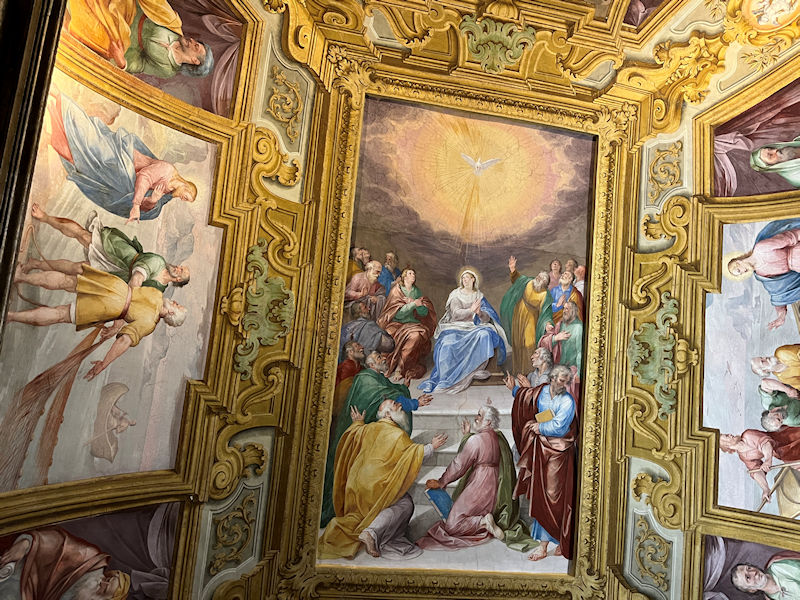
Scenes from Christ's life round the walls, evidently

Somewhere here there's a room with scenes from the life of the Carthusian founder, by different artists, but including a 'Vision of St. Bruno' of about 1625 by Simon Vouet; one would love to see that, but we didn't.
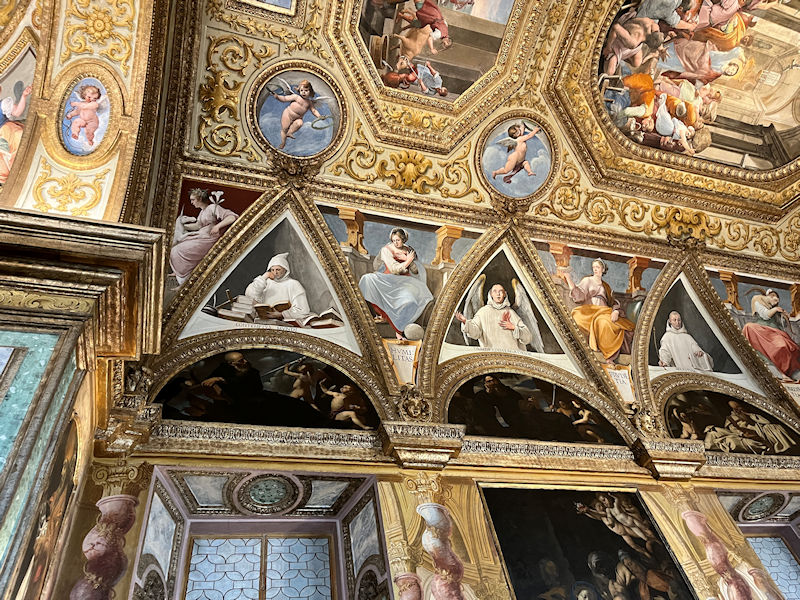
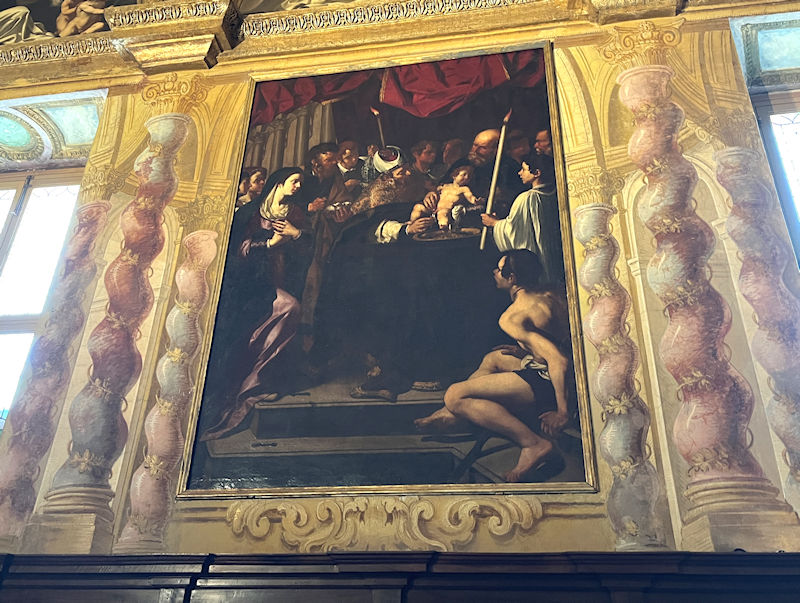
A circumcision scene, by Paolo Finoglio, 1626 (what was this fascination with circumcision scenes? Is that normal?)
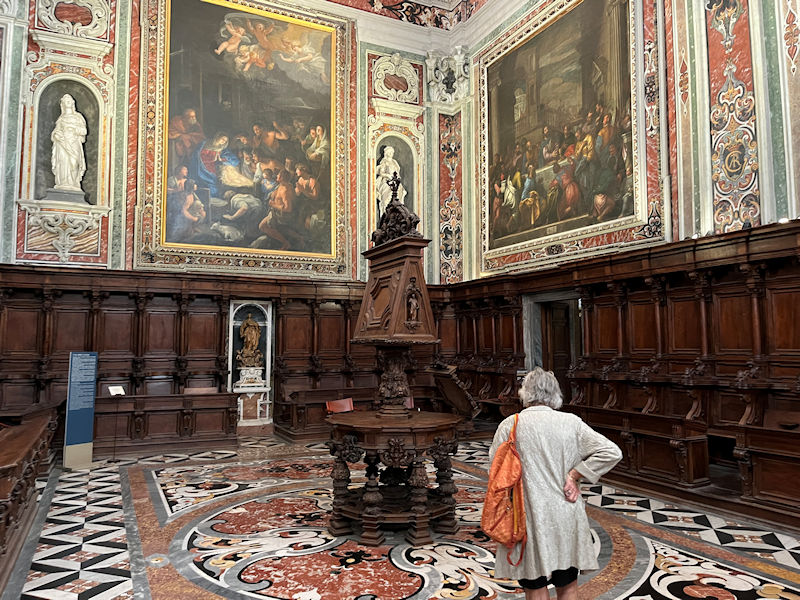
This, perhaps, is the Coro dei Conversi, the choir of the lay brothers.
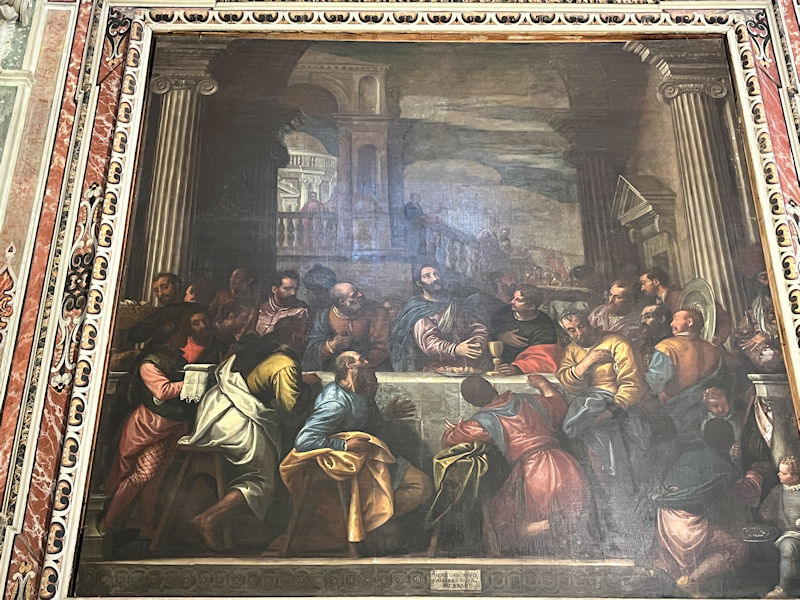
That 'Last Supper' is said to be by Carletto Caliari, of the workshop of Paolo Veronese, 1589. (We won't bother with a close-up of the main dish; it just looks a stack of little hors d'oeuvre crackers that's toppled over.) Other large canvases are by Guido Reni, Massimo Stanzoni, Jusepe de Ribera, and again, Battistello Caracciolo.
In the Sacristy, also off the apse
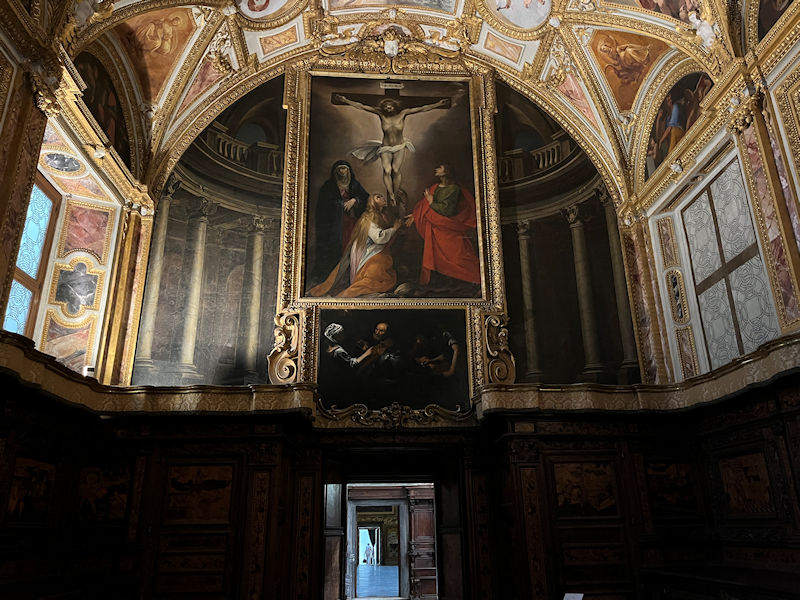

The walls of the Sacristy were largely done by the Cavalier d’Arpino, including the 'Passion of Christ', 1596-1597.
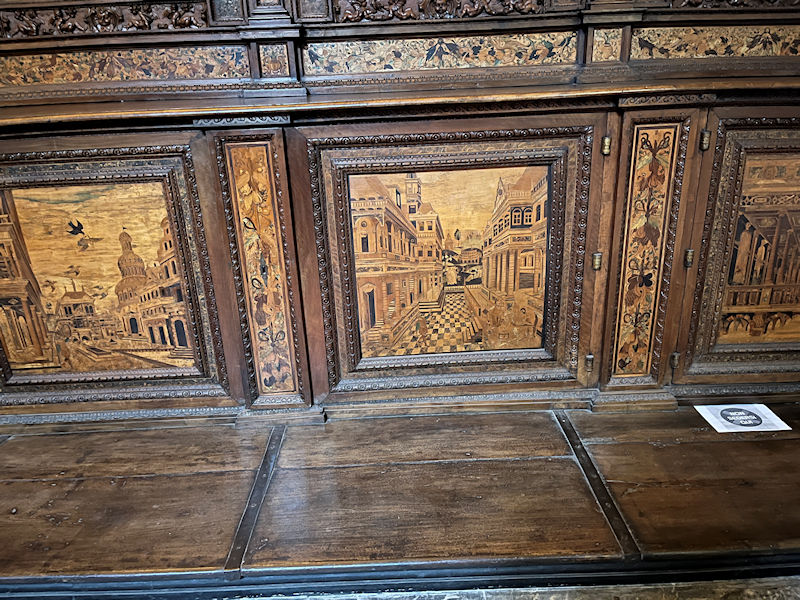
The wood inlay technique of marquetry, called intarsia, was very popular in northern Italy in the 15th and 16th centuries. Apparently farther south as well -- the Sacristy is distinguished by these intarsi inlaid scenes around the floor level, worked by the Flemish Henry of Utrecht, Lorenzo Ducha and Teodoro de Vogel.
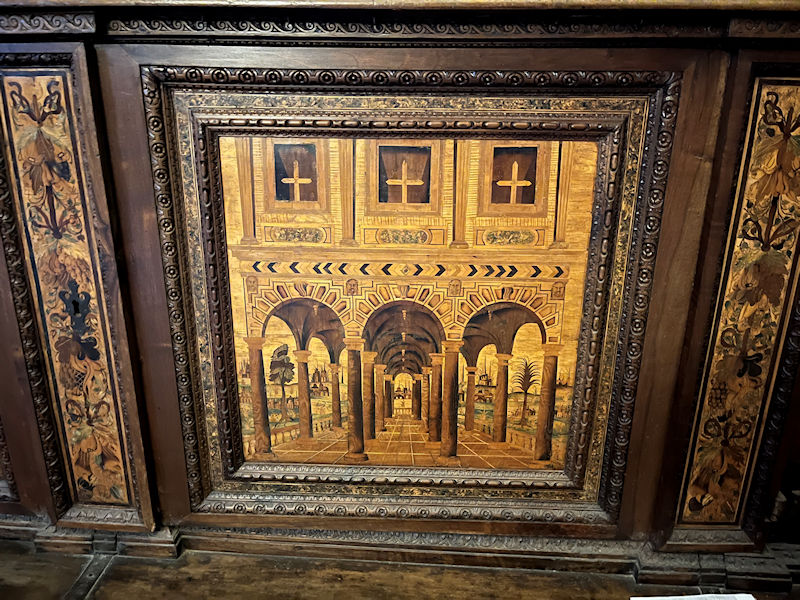
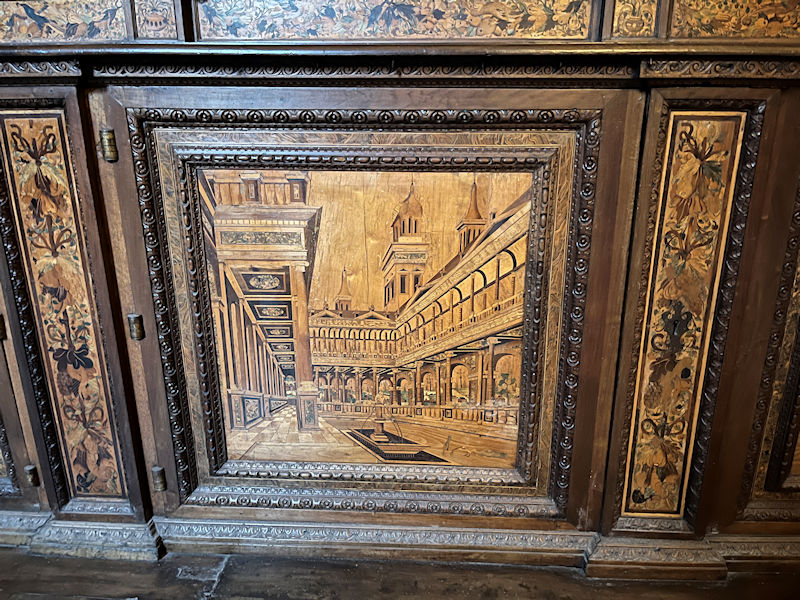

This is the Chapel of the New Treasure, characterized by an altar of 1610 by the Florentine Giovanni Selino, surmounted by the apparently famous altarpiece of the Pietà by Jusepe de Ribera, dated 1637.
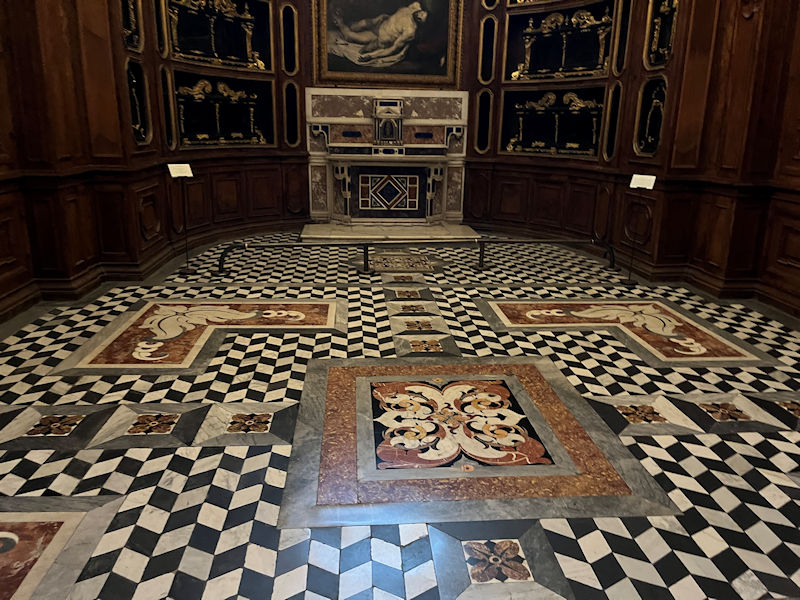
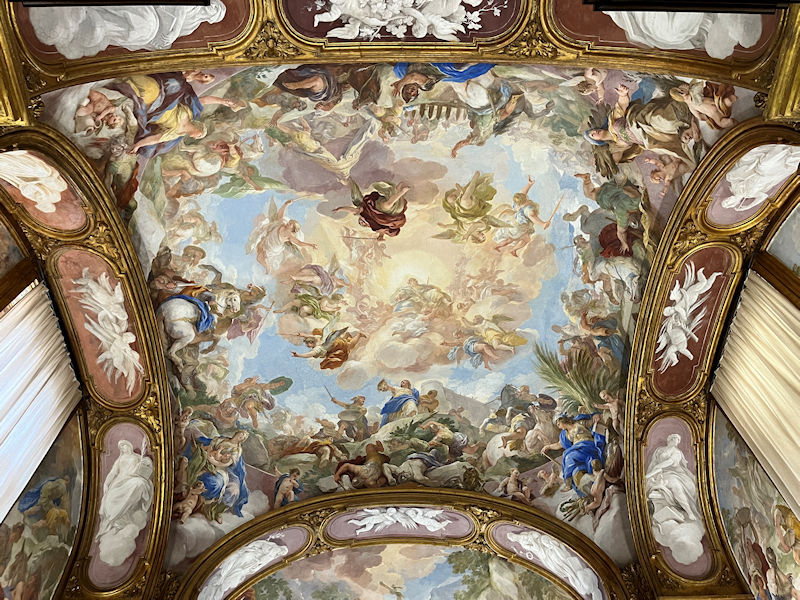
More people ascending into Heaven, probably worthily. The frescoes in the vault are apparently all by the neapolitan Luca Giordano in about 1704.

But we're stilll lost. Will we ever find our way out?
The Naval Museum
And that's the interior of the Certosa di San Martino from the parapet of Castel Sant'Elmo, 6 November 2023.
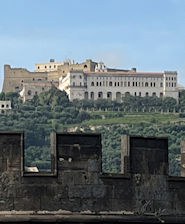 Dwight Peck's personal website
Dwight Peck's personal website















































